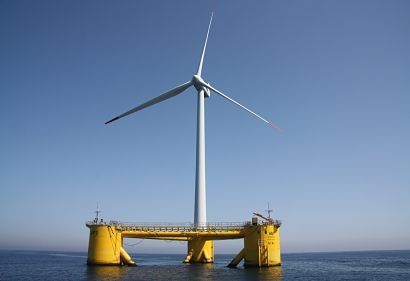
The Axis TLB is a robust substructure and mooring system that provides controlled stability, roll and pitch for wind turbines. It comprises a subsurface buoy that supports the wind turbine. The buoy is fixed, by tensioned tethers, to a modular gravity base anchor/foundation on the seabed. It costs less than other floating offshore wind designs and additional benefits are its off-site pre-cast fabrication, a relatively small seabed footprint, no need for piling or jack-up vessels and a simple decommissioning process. It also offers the potential for wave power.
The two awards (wind and natural energy categories) were made at the Rushlight Show in London on January 30th. Rushlight brought together cleantech developers with the investment community and businesses looking to source suppliers and partners. Rushlight’s sponsors included Innovate UK and the UK Department for International Development, BEIS and Carbon Limiting Technologies.
“It’s fantastic news that our technology has been recognised by an independent panel of experts at the Rushlight Show” said John Baross, Founder and Managing Director of Axis. “It’s a great boost for the Axis team as we take forward our technology for commercial deployment in UK and overseas waters. We have used our experience and technical knowledge of working in the offshore oil and gas sector for 20 years to design the TLB for use in the floating offshore wind sector.”
The market for floating offshore wind (FOW) is forecast to grow significantly over the next decade and beyond, as part of the global effort to achieve Net Zero. Analysts forecast the FOW sector to deliver 12 GW of offshore wind by 2030.
The development and commercialisation of the TLB has received grant and advisory support from BEIS through its Energy Entrepreneurs Fund that specifically focuses on early stage low carbon technologies.
A 2018 study by Strathclyde University’s Department of Naval Architecture concluded that Axis’s Tension Leg Buoy technology, compared with other Floating Offshore wind concepts, “demonstrates better stability performance, flexibility in installation and transportation, reduced requirement for water depth, lowered tether/tendon tension fluctuation with free flooded central column and possibility of integrating a wave energy device to form a multi-energy complimentary system.”
For additional information:

